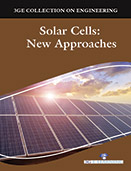Engineering and Technology

mankind has witnessed an enormous increase in energy consumption during last 100 years. At the end of the 19th century coal was the main source of energy. In this period electricity was introduced in the industrialized countries as a new and elegant form of energy. This form of energy was quickly applied on a large scale. The widespread growth of electricity use led to construction of hydroelectric plants and hydropower became an important source of energy in the first half of the 20th century. Nevertheless, it has become evident at the end of the 20th century that the philosophy of human progress that has manifested itself in a huge production and consumption of goods has a negative side too. It has been recognized that a massive consumption of fossil fuels in order to fulfil the present energy demands has a negative impact on the environment. This is the reason why the attention is turning to the renewable energy sources. Everyday sun sends out tremendous amount of energy in the form of heat and radiations called solar energy. Solar energy is a limitless source of energy which is available at no cost. The major benefit of solar energy over other conventional power generators is that the sunlight can be directly harvested into solar energy with the use of small and tiny photovoltaic (PV) solar cell. It can easily compensate the energy drawn from the non-renewable sources of energy such as fossil fuels and petroleum deposits inside the earth. The fabrication of solar cells has passed through a large number of improvement steps from one generation to another. Silicon based solar cells were the first generation solar cells grown on Si wafers, mainly single crystals. Further development to thin films, dye sensitized solar cells and organic solar cells enhanced the cell efficiency. The development is basically hindered by the cost and efficiency. In order to choose the right solar cell for a specific geographic location, we are required to understand fundamental mechanisms and functions of several solar technologies that are widely studied.
This edition named “Solar Cells New Approaches” deals with the new concepts and new trends of solar cell development. To increase the photoelectric conversion efficiency, reduce the cost, and for application in a much broader field, thin film solar cell, flexible solar cell, and tandem solar cell have become important subjects to be studied. As the representative of the solar cells of the third generation, the progress and challenges of dye sensitized solar cell was also reviewed. The text also tries to emphasize the various practices and methods to promote the benefits of solar energy. A valuable guide to the students and practitioners covers up-to-date information on the mechanisms of solar energy conversion.